INDEPENDENCE
“All’s Set!” Independence, Missouri was once known as the “Queen City of the Trails.” It served as the westernmost port as a jumping-off point for the Santa Fe, Oregon, and California Trails. This was the overloaded nerve center for westward trade and expansion.

(Mural courtesy of the National Frontier Trails Museum in Independence, MO)
Today, following the trail from Independence into Kansas City / Westport, with a metro area population over 2 million, can be confusing. With three major pioneer trails that were like super highways merging and all of the routes branching out as wagon trains headed to and from — you’ll want to sit down and map your route carefully before tackling this leg.
Fortunately, a map of KC is like a wagon wheel with I-435 as the outer wheel, downtown KC in the center, and the other highways and suburbs as spokes.
FOOD

You will also want to read up on where to get great BBQ because, well … this is Kansas City and they are all about fantastic sweet molasses ‘Q and jazz!
Check out online reviews and the following faves:
Q39 (in midtown near Westport)
Joe’s Kansas City (west of Westport + two other locations)
Fiorella’s Jack Stack (downtown Freight House, Country Club Plaza + three other locations)
Order your Q of choice and be sure to try the burnt ends as well. Repeat: Do not go to Kansas City without trying burnt ends, you’ll never forgive yourself.
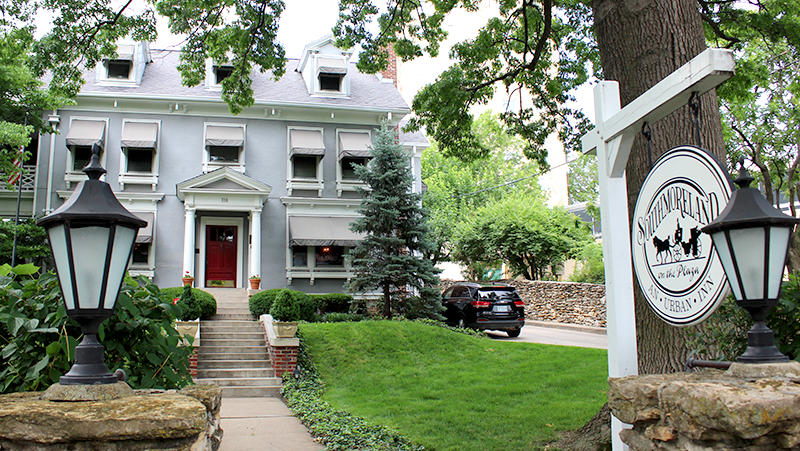
And while our favorite B&B was was built in 1913 after the heyday of the trail (above), they serve a 3 course breakfast with a BBQ option (featured on BBQ with Bobby Flay) and are located near the Nelson Museum, Kemper Modern Museum and the Country Club Plaza.
The “City of Fountains” is worth a day or two to discover – or a week if you have the time.
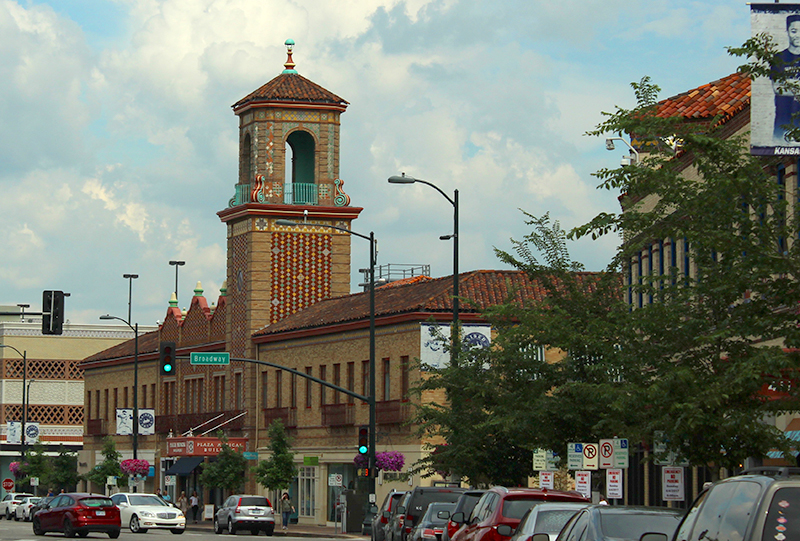
Above pictured: The Country Club Plaza
WESTPORT
As America continued to expand at a rapid pace and the trail gained its fame, boats pushed further up the Missouri River and reached as far west as possible before the river’s northward bend, where the town of Westport blossomed.
Missouri was admitted as 24th US state on August 10, 1821, and was as far west as you could possibly go. The area we know as Kansas was labeled ‘Indian Territory,’ and Americans could not live nor trade west of the Missouri border.
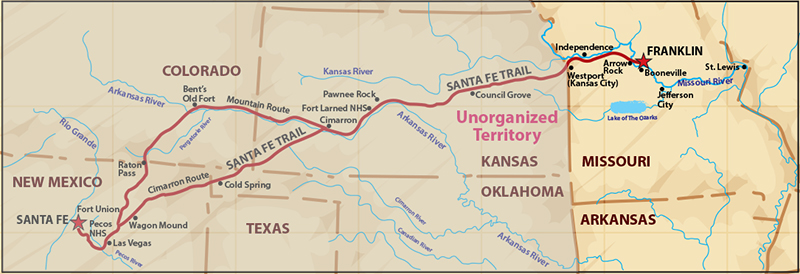
Amy went to school in Kansas City and loved the artsy historic area of Westport, only blocks from her apartment. Nowadays as we drive by the Old Westport wagon (pictured below) she marvels that she lived and drove the Santa Fe Trail for years without realizing the significance. In school she studied the Revolutionary and Civil War. The SFT was barely if at all mentioned, and as we’ve said, for many years we thought it was just an old cattle route.

Old Westport became the next major point of embarkation in the 1830s simply because it was further west than Independence, and every mile counted on a wagon train. Eventually, by the 1850’s Westport surpassed Independence in size as the major resource for wagon trains outfitted for the three trails: Santa Fe, California and Oregon.
In the novel Blood and Thunder, that we refer too often as it tells the history of westward expansion through the lives of Kit Carson and the great Navajo leader Narbona, Westport is mentioned several times.
 In 1842, Carson had just gotten out of a bad marriage, was living in Taos, New Mexico and had fallen in love with Josefa Jamarillo. His young daughter Adaline was “approaching school age, (and) would be better off with his relatives back in Missouri.” Before introducing his “primitive-looking” girl to his family, he traveled with her eastward on the SFT and stopped in Westport to to have special clothes tailored for her. “Susannah Yoacham, the daughter of a Westport tavern owner, recalled Adaline well. ‘Carson brought this little girl with him to be educated, she came to us dressed in buckskin and left dressed in the finest goods (that) could then be bought on the border. She was uncivilized. She pulled up all my mother’s vines and was chewing the roots when we found her at it.”
In 1842, Carson had just gotten out of a bad marriage, was living in Taos, New Mexico and had fallen in love with Josefa Jamarillo. His young daughter Adaline was “approaching school age, (and) would be better off with his relatives back in Missouri.” Before introducing his “primitive-looking” girl to his family, he traveled with her eastward on the SFT and stopped in Westport to to have special clothes tailored for her. “Susannah Yoacham, the daughter of a Westport tavern owner, recalled Adaline well. ‘Carson brought this little girl with him to be educated, she came to us dressed in buckskin and left dressed in the finest goods (that) could then be bought on the border. She was uncivilized. She pulled up all my mother’s vines and was chewing the roots when we found her at it.”
Carson left Adaline with family near Fayette, Missouri and they welcomed her. “She was in good hands, among his own people.”
Note: it’s a good idea to read Blood and Thunder before following the trail. You’ll have a greater understanding of the history, the people, significance, timeframes, the rush for expansion, hardship and brutality of the times. Authors of the Oregon Trail have written that for every 15 feet you travel, someone died on the route. We don’t know of an actual number but this would not surprise us in terms of the SFT.


Pictured above: Kelly’s of Westport est. 1850. Back in the day it was a grocery operated by the Daniel Boone family, and tunnels in the basement are thought to have been a part of the Underground Railroad. Today it is a sports bar known as the local’s go-to place for Chiefs, Royals games and St. Patrick’s Day.
Kansas City was founded in the 1830s as a Missouri River port at its confluence with the Kansas River coming in from the west. John Calvin McCoy is generally considered the “father of Kansas City” after he formally founded the town. He had supplies landed at a rocky point on the Missouri River, which became known as “Westport’s Landing.”
(Photo of map was taken from a plaque at Lone Elm Park, courtesy of Kansas City Star)
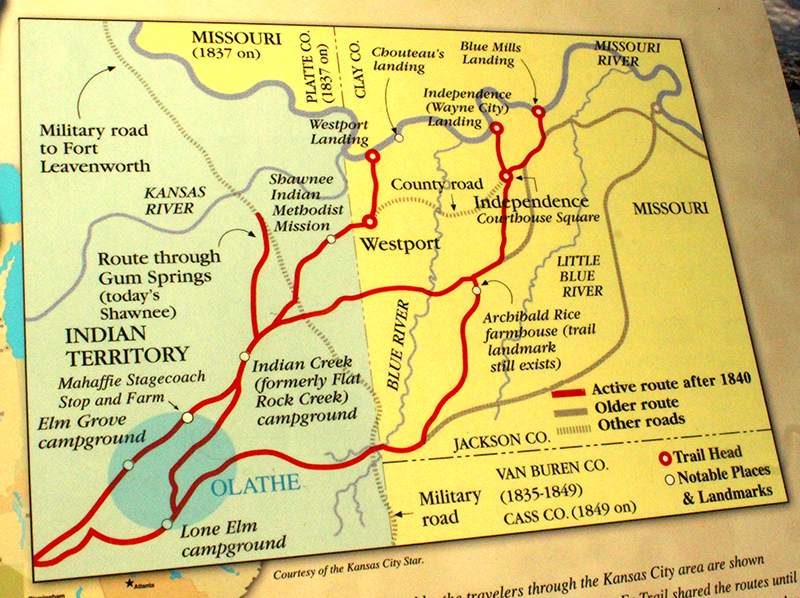
The overland trails (over land) branched-off in many directions with pioneers always looking for ways to shorten their routes. In 2 previous articles, we shared information about the Archibald-Rice House and Minor Park, both key spots when pioneers travelled in a southwestern direction to Santa Fe out of Independence. While others took a westerly route, then south out of Westport through what is now Kansas to meet up in Lone Elm and Gardner Junction. There the trails separated: Santa Fe trail to the southwest, Oregon / California trails to the northwest.
Note: the Archibald House and Minor Park are spaced far apart and you will need to map out your route to determine how much time you have to spend exploring. KC is a fantastic, sprawling city.
As you travel westward out of the city, keep in mind that the town you are heading for is Council Grove, Kansas – one of the Top 5 Must-See Places on the SFT.
(Photo of map courtesy of the National Frontier Trails Museum in Independence, MO)

All three trails were general paths in which you could weave hither and yon in any number of directions (meandering spokes). The trails were a few miles wide at places, and people made their own way, especially if they thought they could shave off some distance or get around slow moving wagon trains.
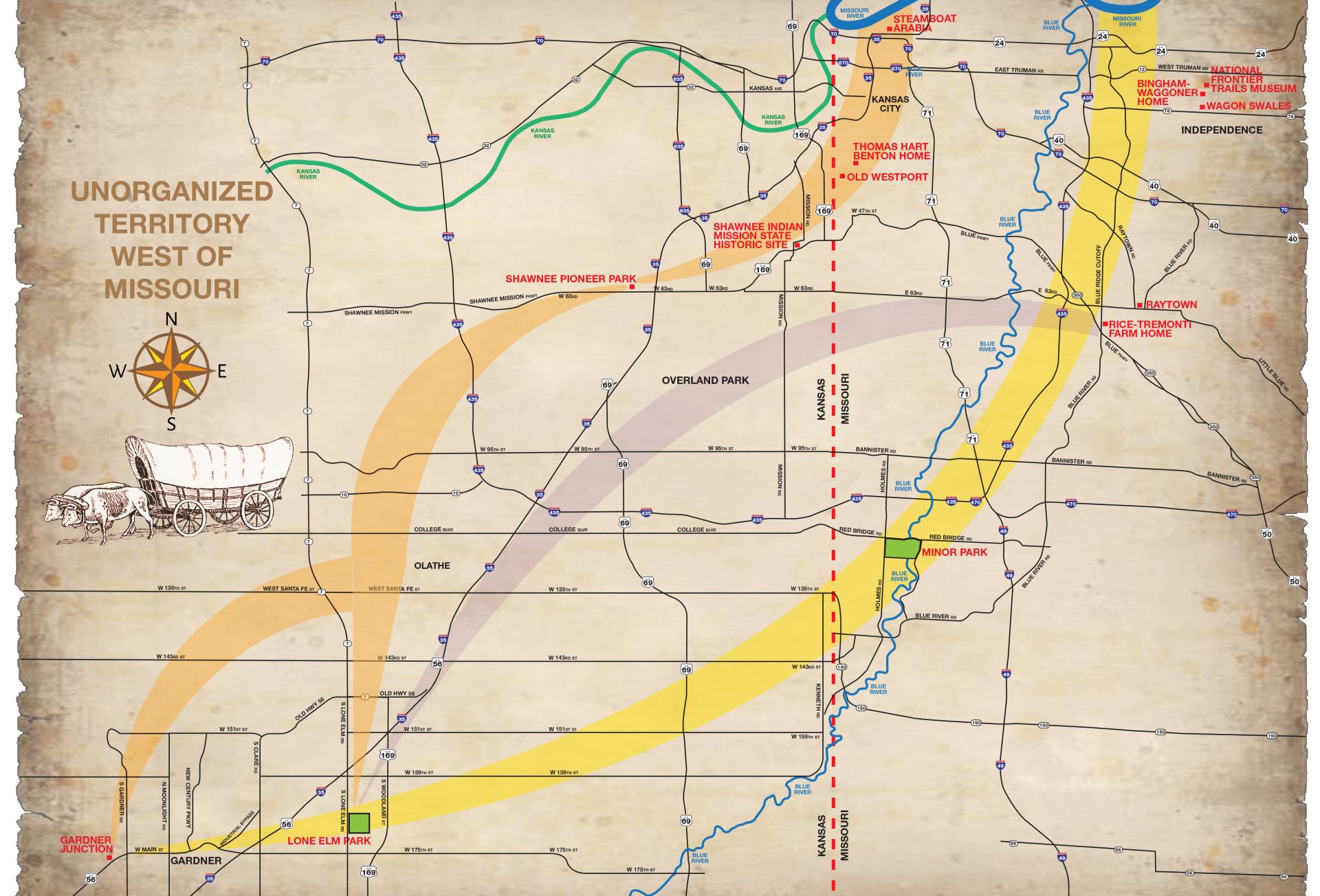
Santa Fe Trail Routes – our interpretation of the possible routes
We contacted a long time family friend, Babycake, while in Kansas City and the minute we mentioned our SFTrail project she responded, “Oh, yes. I have wagon ruts all over my property” in the southern region of town. How about that?!! We had no idea. In all these years it never came up in conversation and now we think of this as living history literally in her own backyard. If you’re chatty with locals about your journey, odds are strong that you’ll meet people with ruts on their land and interesting family stories.
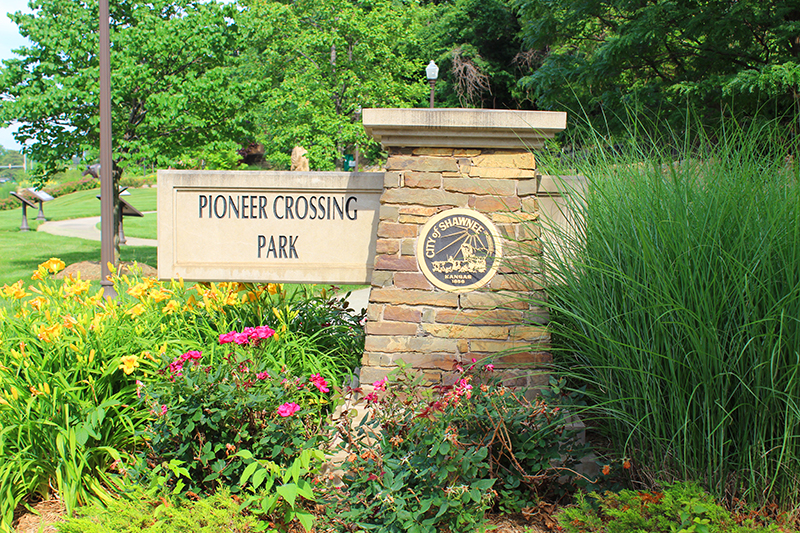
INTO KANSAS
In Shawnee, Kansas there are 2 magnificent sculptures showcasing the pioneer spirit. Pioneer Crossing Park includes native grasses and plaques commemorating each of the pioneer trails that crossed through Shawnee city limits.


Lone Elm was the next stop for travelers heading to Santa Fe, and became a trail campsite and rendezvous point for wagon trains. Named because of the campsite’s plentiful trees that were quickly chopped down for fuel and wagon parts, the woods dwindled to one remaining lone elm. It was one of the last trees emigrants might see for many miles as they rode and walked across the arid, western plains.

On US 56 about two miles west of Gardner, Kansas the Westport and Independence Routes converged at Gardner Junction. Then, depending on their destination, wagons would continue southwest to Santa Fe, as they had since 1821, or they would turn northwesterly towards Oregon or California.
Again, the destination to look ahead for is Council Grove.

We love following maps on 2-lane roads, tracing the path with our fingers and noting how easy it is to get from one place to another in a short period of time, relatively speaking. Nothing like what it must have been for travelers on the Santa Fe Trail in the mid-1800’s, where many rugged months were spent on a not-really-a-road carved into the earth as they headed west.
As you continue westward into Kansas, check the official Santa Fe Trail Association and National Parks maps for sites that interest you. We highly recommend the Black Jack Ruts and Rock Creek Crossing. This trail page offers great information on the Douglas County Chapter you are traveling.
Happy Trails and Discoveries!
Amy and Mr.D
